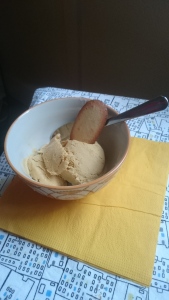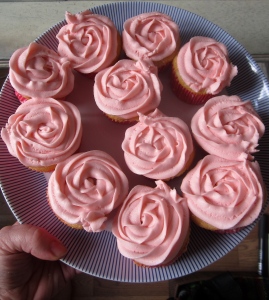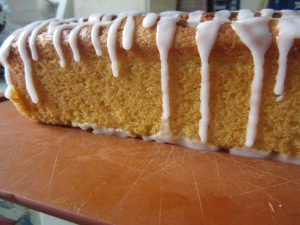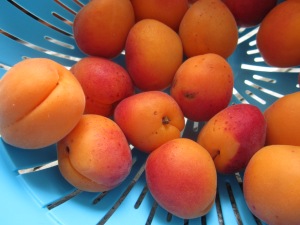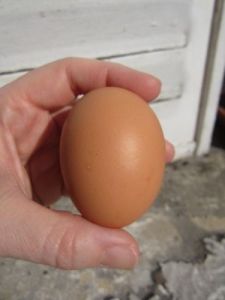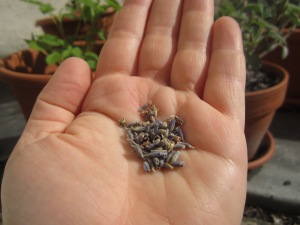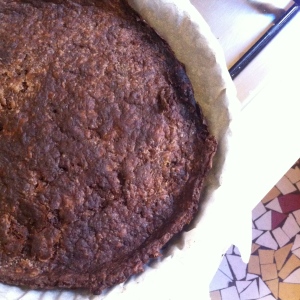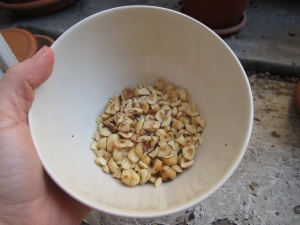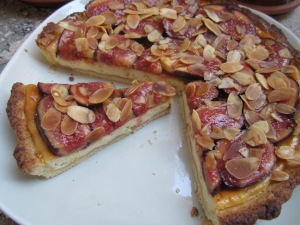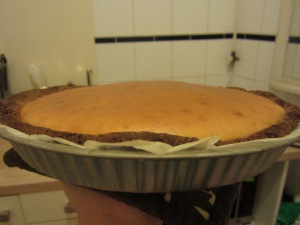Given our tiny Parisian apartments and limited storage space, my culinarily inclined friends will often daydream about shared purchases: slow cookers, waffle makers, raclette grills, and most recently – ice cream machines.
When Frances suggested an ice cream machine, I thought long and hard: does it really make sense to lug it uptown and downtown every week, or every time my French lifemate wants more homemade chocolate sorbet? But then a light bulb went off.
Another dear friend, Meta, was leaving town for 11 months – and she is known for commencing her dinner parties with asparagus soup adorned with a scoop of homemade foie gras ice cream.
Meta agreed to lend us her ice cream machine, and so, for the last two months, it has made many trips between the 19th and the 11th in a sturdy shopping bag hung from the handlebars of our bicycles.
We started with the masters: studying techniques and flavor combinations for sorbet and ice cream from Serious Eats, David Lebovitz, and NYT Cooking. Then we started branching out and dreaming up our own combinations: Frances, most notably, for roasted peach / miso / ricotta ice cream, and in my case, for doing a mashup of two recipes from Lebovitz to make a perfect fall flavor: pumpkin ice cream with coconut milk and cardamom.
Lots of websites try to tell you that you CAN make ice cream even without an ice cream maker, but to be honest, if you don’t have one of these frozen turbine machines, just stick to granita. In our case, the cheapest turbine machine is only around 40 euros at Darty, so even when Meta comes back, I think we’ll be investing in some new kitchen appliances.
Pumpkin Coconut Ice Cream
Inspired by two recipes from David Lebovitz: Pumpkin Ice Cream and Coconut Ice Cream with Saffron
Ingredients
400 ml (14 oz) coconut milk
200 ml (7 oz) light cream (18% fat)
95 g (1/3 cup plus 2Tablespoons) granulated sugar
¼ teaspoon salt
5 egg yolks
180 g (3/4 cup) pumpkin puree (see note)
60g (1/4 cup) dark brown sugar
½ teaspoon vanilla extract
½ teaspoon dried ginger
1 heaping Tablespoon cardamom pods, lightly crushed in a mortar and pestle
1 or 2 grinds of pepper
Method
Start by preparing the bowls you’ll need: two medium, one large, plus one large saucepan.
Fill the large bowl halfway with ice cubes and some cold water, and place one of the medium bowls in the ice bath. Pour the cream into said medium bowl and set aside.
Beat the egg yolks in the other medium bowl until well combined.
In the saucepan, heat the coconut milk, granulated sugar, and salt over medium low heat. Once it’s hot and producing steam, but before it bubbles, take it off the heat. Whisk about three spoonfuls of the warm milk, one at a time, into the egg yolks to heat them gently without scrambling them. Once they are lukewarm, pour them into the saucepan with the rest of the warm milk and add the cardamom pods, cooking over low heat, stirring constantly, until the mixture thickens and coats the back of a spoon.
Pour this custard into cream in the ice bath. Add the pumpkin puree, dark brown sugar, vanilla, ginger, and black pepper and mix well.
Cover and set the custard in the fridge overnight. The next day, pour the mixture through a fine-mesh sieve, pushing down on the cardamom pods to extract as much custard as possible, then freeze the mixture in your ice cream machine according to manufacturer’s instructions. Freeze for 4-5 hours before serving.
Note: pumpkin puree
Living in France, I’ve gotten used to making my own pumpkin puree for soups and pies, since we don’t have handy cans of Libby’s for sale at every supermarket. If you’re using canned pumpkin make sure it is 100% pumpkin. Other options are frozen pumpkin puree, available in France at any Picard store.
To make your own, simply cut your squash into cubes: you can peel it, or not. Squashes with thinner peels don’t need to be peeled (like a small butternut, or a kuri squash,) but bigger ones (like French potiron) are better off peeled.
Steam the squash over boiling water for 5-12 minutes, or until you can easily pierce it with a knife. Allow to cool slightly, then puree in a blender, food processor, or with a hand blender.


